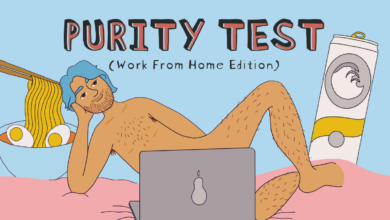Editorial: It’s time to abandon limbs
 Nadya Peek
Nadya PeekAt some point in Jurassic Park (the novel), a guy, apart from one of his legs, gets mostly eaten by a tyrannosaur. One of the main characters then finds the leftover leg and tries to move it to a better resting location and notices how heavy legs are. He forgot to note how absurd they are.
After the torso, the leg is probably tied for the second-heaviest section of the body with its owner’s other leg. Both legs together probably weigh about the same amount as a torso (maybe more, if these legs do a lot of squats). Arms aren’t as bad as legs, but they’re pretty wasteful too. It’s abhorrent how much energy is invested into limbs that have the singular use of transportation when this energy could go into multi-functional body parts instead — things like groin areas, pelvic regions, heads, or even chest cavities.
The average person eats about 2,000 calories of food per day to fuel their day-to-day operations like cell repair and energy. Only most of those calories go to maintaining muscle mass (muscle cells are quite taxing). It makes sense to maintain muscles in your diaphragm or your pelvic floor, which contribute to complex bodily functions. But for muscles in the legs, cellular maintenance is like throwing money into a bonfire. Feeding it maintains the fire, but at the end of the day you have no money and now you have to get more. You decide that you’re going to charge people to sit by the bonfire, but then the fire kind of dies down so you put more money into it. It’s a vicious cycle.
You may now be thinking that you need legs and arms to get yourself to food sources that allow your good body sections, like your torso and head, to function. This may have been true during the dark ages, but with the advent of genetic engineering, we no longer have this problem. We are literally only a hop, skip, and a jump away from solving the biggest energy drain humanity has dealt with since the days of Homo erectus. The only thing stopping us from genetically engineering our children to be limbless are “ethics” boards and the cost limitations of our public healthcare system. This is easily solved in Canada by privatizing healthcare and moving to a more libertarian scientific model that reduces the power of ethics boards to walk all over scientists. I for one do not want to bring a child into this world if they are obligated to run after food sources like a wild animal. It’s 2017. “You need legs and arms to get food, therefore arms and legs are useful” is just a circular, invalid argument.
With proper genetic engineering, your daily 2,000 calories can be invested into useful bodily systems that actually help generate energy or contribute to your lived experience. Put them into your respiratory system to empower your blood cells, your brain to help think of ways to invest energy better, or your gustatory system to improve food absorption. Heck, you could make your gut so efficient that you don’t end up any with metabolic or solid waste at all. If humans actually made this leap, we would eliminate the need for toilets and solve water shortages.
Taking limbs out of the human equation could benefit billions of individuals as they approach the sedentary, cubiclesque lives they can expect in a digital age. If limbless employees put some of their 2,000 calories into their brains, their tweets would be more clever and their abilities to switch between work and play tabs would be far greater than the limbed. They could become smart enough to create dictation technologies that will eliminate the use of keyboards (and thus, the need for hands the limblets we call fingers). Plus, these employees probably won’t have to take bathroom breaks. Global productivity would soar.
Readers should also consider all of the other organisms that have taken up a limbless model and are doing just fine. Trillions of bacteria are doing alright. Some can’t move and are happy, while others that are also happy have found ways to move that miraculously don’t take up 40 per cent of their body mass — things like tiny hairs, little swirly tails, or just the act of pushing internal fluids in a desired direction so that their body kind of “grows” that way. Fungi are all doing great. Worms. Clams. Slugs. Snakes made the switch and don’t regret it. Plants, oh my gosh, plants have managed to grow into gigantic organisms without needing to move anywhere in the first place. And while trees have limbs, they’re more to help out with transpiration, not transportation, so they don’t count here. It’s time to rethink what’s “normal” in this world. We might as well learn from the successes of others.
Meanwhile, coral reefs are limbless and not so successful, but that’s because of limbed humans transporting themselves into delicate limbless space for leisure. It’s also due to climate change, which is also closely linked to human activities that involve transportation in various capacities. So it’s fair to say that having no limbs can put you at risk of extinction, it’s also fair to say that if the limbs of the species responsible for the current mass extinction were removed, things might start looking up.
It’s never too late for change.




